We explain everything about Nepal, where it is located and the history of this nation. Also, what are its characteristics, climate, religion and more.
Nepal
Nepal, officially known as the Federal Democratic Republic of Nepal, is a sovereign nation in South Asia . Its territory is located in the Himalayas, between India and China . It is a secular, multicultural and multilingual state, which covers a territory of just 147,181 km 2 in area.Nepalese territory is landlocked . It is located in the Himalayan mountain range but also covers various types of relief , such as the jungle plains of Terai, or the valley where its capital city , Kathmandu, is located. Its territory is divided into 14 zones containing 75 different districts.
Nepal is one of the poorest and most underdeveloped countries in the world , with half of its population living below the poverty line . The local currency is the Nepalese Rupee (NPR) and agriculture is the economic mainstay of the nation.
Location of Nepal
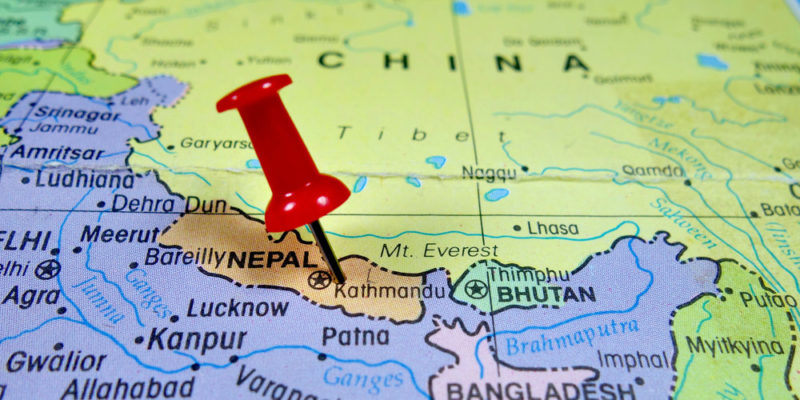 Nepal is located on the Asian continent .
Nepal is located on the Asian continent .It is located in the mountain range that separates the territories of the People's Republic of China (the Tibet region) and India.
It is a rectangle that encompasses a mountainous region , a hilly region and a jungle region .
Nepalese history
Nepalese history begins when the Kirati Empire occupied northern present-day India and southern Tibet in about 563 BC. C. It was a Buddhist empire that was displaced by Hindu fiefdoms around the year 200 AD. C., succeeding in the central power various dynasties.In the 18th century the Gorkha king Prithvi Narayan Shah proclaimed Kathmandu as the capital of the Kingdom . In 1814 he clashed with British troops who agreed to withdraw in exchange for the Sikkim and southern Terai regions. This became known as the Anglo-Nepalese War which ended with the Treaty of Sugauli in 1816.
After the Nepalese collaboration in the confrontation of the rebellion of the Sepoys in India in 1857 , many of the territories ceded to the English were restored to the country.
British meddling brought about the overthrow of the established monarchy and the rise of a new one during the 20th century . A Nepali democratic experiment was created that did not last long , but in 1989 it was resumed by force due to pressure from the Jana Andolan People's Movement.
In 1991, the first free elections in the country took place . In 1996 the Communist Party of Nepal attempted an armed insurrection to proclaim a Maoist state. Thus began a Civil War that lasted for 10 years, claiming the lives of almost 13,000 people.
Capital: Kathmandu
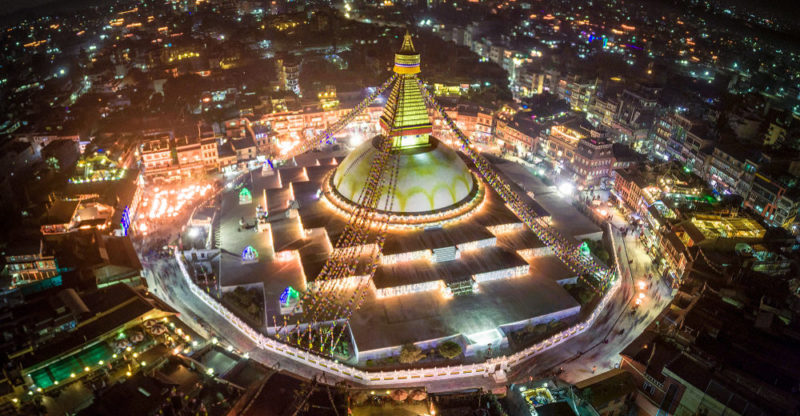 The capital of Nepal is Kathmandu, a city of just over a million inhabitants (2013) . It is located in a valley of the same name in the center of the nation, at about 1,317 meters above sea level. It is strongly marked by Buddhism and Hinduism, abundant in temples and feline statues and images.
The capital of Nepal is Kathmandu, a city of just over a million inhabitants (2013) . It is located in a valley of the same name in the center of the nation, at about 1,317 meters above sea level. It is strongly marked by Buddhism and Hinduism, abundant in temples and feline statues and images.In its vicinity (The Kathmandu Valley) there are seven different sites considered by UNESCO as cultural heritage of humanity:
- Durbar Square in Hanuman Dhoka. The largest of the royal squares, where you can see historic buildings from the 17th and 18th centuries.
- Durbar Square in Patan. With 19 historical buildings that reflect the Malla dynasty.
- Durbar Square in Bhaktapur. Where are monuments from the twelfth and eighteenth centuries.
- Swayambhunath. A stupa (Buddhist building) located on a hill three kilometers from Kathmandu, where the oldest Buddhist monument in the valley is.
- Boudhanath. The largest stupa in Nepal, dating back to the 5th century.
- The area of monuments of Pashuati. Hindu pilgrimage center on both banks of the Bagmati River .
- The area of the monuments of Changu Narayan. In the eastern part of the valley.
Parliamentary Government of Nepal
The current government of Nepal is a democratic attempt resulting from the end of the Civil War that faced monarchists and communists for 10 years. Peace was achieved in 2006 and began a transition process from monarchy (which had lasted 200 years) to democracy .Its Constitution, approved in 2015, establishes that it is a Federal Parliamentary Republic . Its government is made up of:
- Executive Branch . President and Council of Ministers, headed in turn by a Prime Minister.
- Legislative Branch . Consisting of the Federal Parliament (Lower House), the National Assembly (Upper House) and the Provincial Assemblies.
Climate of Nepal
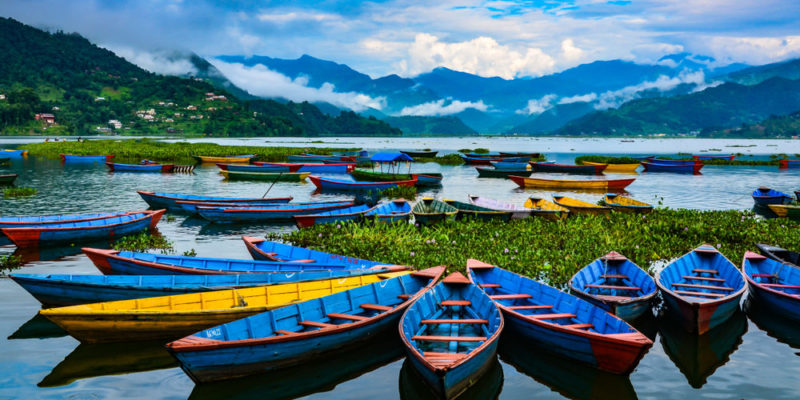 The territory of Nepal covers five climatic zones, related to the height of its territories.
The territory of Nepal covers five climatic zones, related to the height of its territories.
- Tropical and subtropical zone . It is found below 1,200 meters in elevation, especially in the jungle region .
- temperate zone . Located between 1200 meters and 2400.
- cold area In the mountains , between 2,400 and 3,600 meters.
- Subarctic zone. They are the frozen peaks of the Himalayan mountains, like Everest, between 3,600 and 4,400 meters high.
The Nepalese climate has five seasons: summer, monsoon, autumn, winter and spring.
Multiethnic population
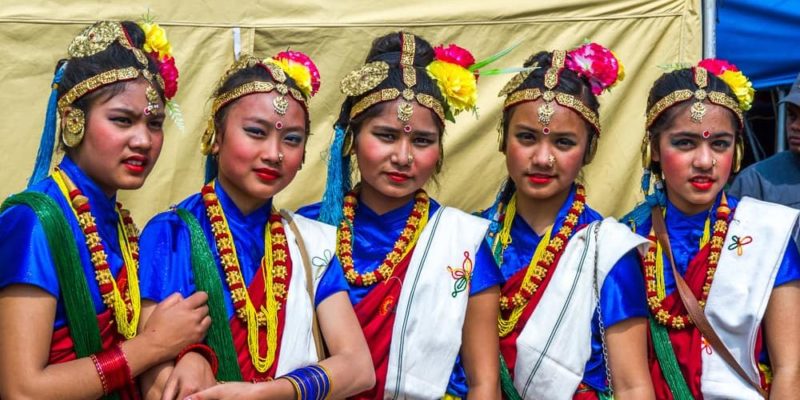
Being a multi-ethnic country, the Nepalese population of 30,485,798 inhabitants (2015) can be classified into different groups with different ancestry, such as:
- Khas or pahari. The proper Nepalese group, highlanders, which represents the largest group, stratified according to the brahmanical caste system into chatrias (warriors and politicians), brahmins (priestly caste), thakuri, gharti and kami (dalit, untouchables or outcasts).
- Madhesi. Inhabitants of the Terai plains, they are an ethnic conglomerate who speak Indo -Iranian languages: Maijilí (3.6 million), Bhoshpuri (2.2 million) and Awadi. They are also organized according to caste and fight for autonomous status in the Nepalese government.
- Newa. The native people of the Kathmandu Valley, whose population does not exceed one million three hundred thousand inhabitants. They speak their own Tibeto-Burman language, and were the ruling dynasty until the 16th century.
- Magar. Speakers of Sino-Tibetan languages, who would have migrated to Nepal from Siberia. They were the ruling dynasty from the 16th century until 2007.
- Tamang. Speakers of a language similar to Tibetan, it is assumed that they came from Tibet when King Trisong in the year 755 made them his border guards.
- Gurung. No more than 500,000 inhabitants, they live in the mountains dedicated to grazing and trading .
- Sherpa. With around 150,000 inhabitants, they are an ethnic group from Sichuan, in China, who would have taken refuge in the Himalayas centuries ago.
- Tharu. The aboriginal people of the Nepalese jungles, numbering one million two hundred thousand people , inhabiting communal houses of 150 family members or more.
Nepalese religion

Hinduism is the majority religion in Nepal , encompassing more than 80% of its population. Until 2006, it was the only state in the world with it as its official religion, despite its deep Buddhist roots.
Other religions practiced are the Buddhism (10.7%), Islam (4.2%) and other religions (3.5%) among those who are atheists and Christians , minority populations.
Nepali language
The Nepali language is spoken by almost half of the population (47.8%) , as their mother tongue. But given the ethnic complexity of the Nepalese state, the Mahithili (12.1%), Bhojpuri (7.4%), Tharu (5.8%), Tamang (5.1%), Newari (3 .6%), magar (3.3%) and awadhi (2.4%).
tricolor flag
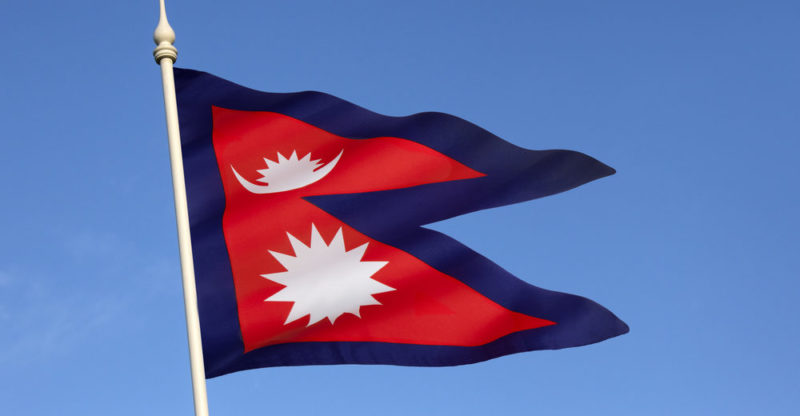
The flag of Nepal is one of the few in the world that is neither rectangular nor square in shape . Rather, it consists of two triangles that represent the Himalayas and the country's two main religions and cultural influences: Buddhism and Hinduism.
The interior of the flag is red, and its edges are blue. Within the red zone are the sun and the moon , representing the two royal dynasties. This flag was adopted in 1962.
the Himalayas
The Himalayas are a mountain range that covers much of Nepalese , Chinese, Indian and Bhutanese territory. In addition, it has some of the highest peaks in the world, such as Mount Everest, at 8,848 meters above sea level, the highest mountain on the planet .
In addition, important rivers such as the Ganges , the Indus, the Brahmaputra, the Yamuna and the Yangtze are born in the Himalayas . These mountains are sacred and pilgrimage sites for both Hinduism and Buddhism throughout the South Asian region.
The above content published at Collaborative Research Group is for informational and educational purposes only and has been developed by referring reliable sources and recommendations from technology experts. We do not have any contact with official entities nor do we intend to replace the information that they emit.
Cultural journalist with great interest in education and technological innovation in the classroom. The future passes through technology and it is already here. .
Leave a reply
Your email address will not be published. Required fields are marked *Recent post

Sport: What Is It, Types, Risks, Features, Characteristics and Examples

Dogs: Emergence, Features, Characteristics, Feeding and Breeds

Story: Definition, Elements, Structure, Features and Characteristics

